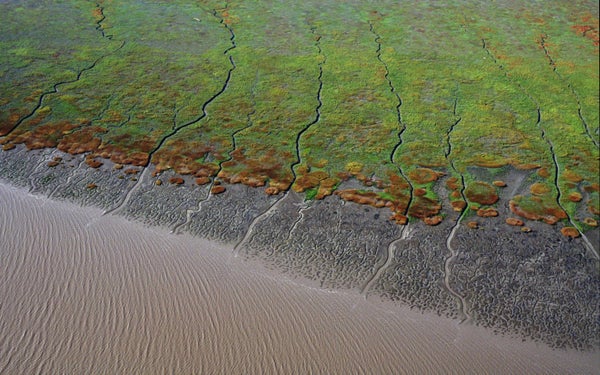February 1, 2024
2 min read
Wetlands with a small amount of salinity can produce more methane gas than those filled with freshwater or lots of seawater, new research suggests
Aerial view above tidal wetlands and mud flats South San Francisco Bay.
CLIMATEWIRE | Sea-level rise could cause some coastal wetlands to release huge quantities of methane gas, according to a new study that challenges how scientists view the relationship between salinity levels and climate-warming emissions.
Wetlands are diverse ecosystems that help protect nearby communities from floods and filter pollutants out of larger rivers and waterways. While they are also the largest natural source of methane emissions worldwide, how much of the gas is released depends on the wetland’s location and its characteristics — with some wetlands storing more greenhouse gases than they emit.
One important factor is saltiness. Scientists have theorized that wetlands with higher salinity levels — such as those along coastlines — emit less methane than freshwater wetlands. That’s because salty water is thought to be less hospitable to microorganisms that produce methane.
On supporting science journalism
If you’re enjoying this article, consider supporting our award-winning journalism by subscribing. By purchasing a subscription you are helping to ensure the future of impactful stories about the discoveries and ideas shaping our world today.
But researchers at Lawrence Berkeley National Laboratory found the opposite is sometimes true.
After studying 11 wetland zones in the San Francisco Bay Area, they found that one zone with a small amount of salt content emitted far more methane — up to 10 times as much — than other sites studied, including freshwater areas and those with high salinity.
The results of their research, published Monday in the journal mSystems, suggest that wetlands could start producing more greenhouse gases as climate change pushes more ocean water inland.
The…
Read the full article here







